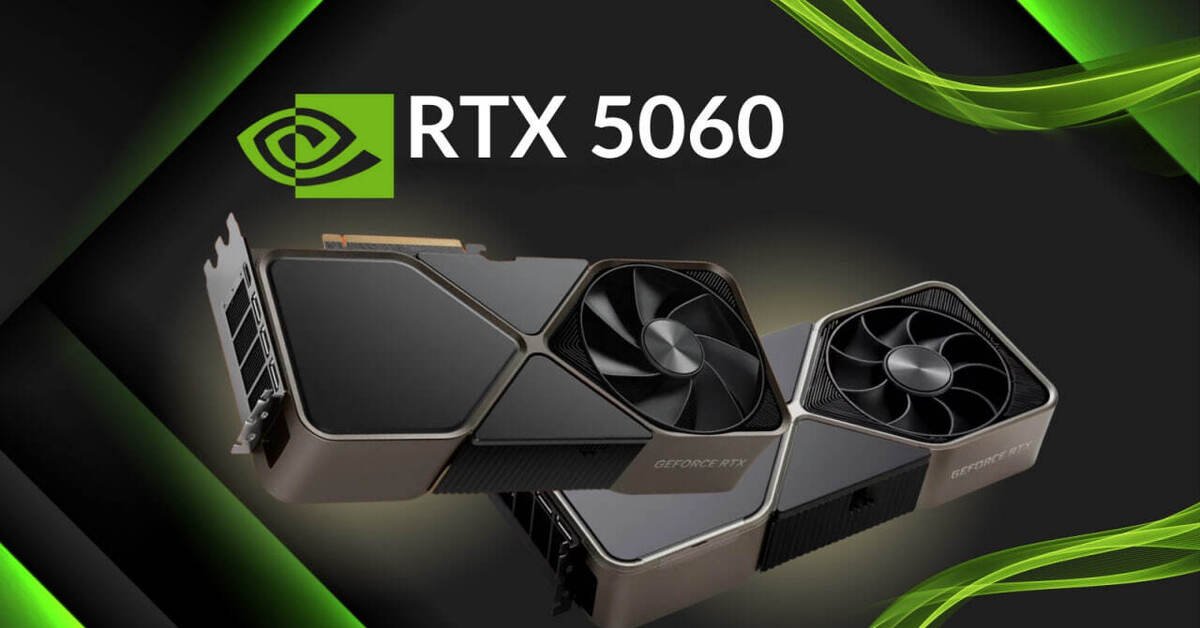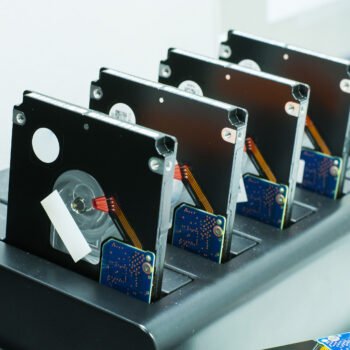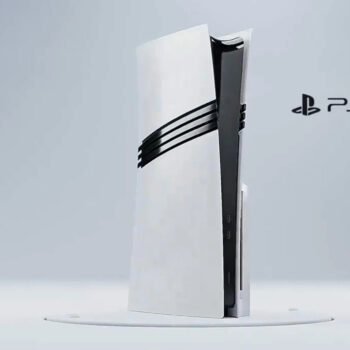NVIDIA’s newest flagship GPU is here, creating serious buzz. That RTX 5090 vs. RTX 4090 discussion is getting loud with gamers and creators. Both cards deliver massive power, but figuring out where your money goes is key.
We’ll compare these top-tier graphics cards head-to-head. Expect clear looks at raw speed and actual worth for your setup.
TL;DR: RTX 5090 vs. RTX 4090 Verdict
- ⚡ 30-40% faster 4K gaming with ray tracing, plus 2–4× FPS gains using DLSS 4 Multi Frame Generation.
- 🧠 32GB GDDR7 VRAM (vs.. 24GB GDDR6X), 78% more bandwidth, and 5th-gen Tensor Cores for AI workloads.
- 🔥 575W power draw (+28% vs.. RTX 4090) but dual-slot design (vs.. triple-slot).
- 💸 $1,999 launch price (25% costlier than RTX 4090’s $1,599), best for 4K enthusiasts/professionals.
Architectural Revolution: Blackwell vs. Ada Lovelace
The NVIDIA Blackwell architecture represents a massive leap forward from Ada Lovelace. This isn’t just another incremental update – it’s a complete reimagining of what’s possible in high-end graphics.
- Die & Transistors: The RTX 5090 sports a massive 744mm² die packed with 92.2 billion transistors. That’s 21% more transistors than the RTX 4090’s AD102 chip, all manufactured on TSMC’s refined 4N process node.
- Cores & RT/Tensor: Numbers tell the story here. The RTX 5090 delivers 21,760 CUDA cores – a hefty 33% increase over its predecessor. Fourth-generation RT cores boost ray tracing performance by 66% in terms of TFLOPS. Meanwhile, fifth-generation Tensor Cores absolutely demolish AI workloads with a staggering 154% TOPS gain.
- Memory & Bandwidth: Here’s where things get really interesting. The RTX 5090 features a 512-bit memory bus paired with blazing-fast 28 Gbps GDDR7 vs. GDDR6X memory. This combo delivers 1,792 GB/s of bandwidth – a massive 78% jump over the RTX 4090’s already impressive specs.
- Media Engine: Content creators will love the ninth-generation NVENC encoder with 4:2:2 color support. Three dedicated decoders handle 8K streaming without breaking a sweat.
Gaming Performance: Benchmarks at 1080p, 1440p, 4K
RTX 5090 benchmarks paint a clear picture: this card dominates at higher resolutions. But the story varies depending on your target resolution.
- 4K Raster: The RTX 5090 delivers a solid 27% average FPS boost over the RTX 4090. In demanding AAA titles, you’re looking at 137 FPS average versus 108 FPS average. Some games show even bigger gains – A Plague Tale: Requiem sees a whopping 42% improvement.
- 4K Ray Tracing: This is where the RTX 5090 really flexes its muscles. 4K ray tracing performance jumps by 30-48% across the board. Cyberpunk 2077 with RT Overdrive goes from 33 FPS to 47 FPS natively. With DLSS 4 enabled, you’ll hit an incredible 283 FPS.
- 1440p/1080p: Lower resolutions tell a different story. The RTX 5090 only manages 5-12% gains here, often hitting CPU bottlenecks. The RTX 4090 occasionally even pulls ahead at 1080p.
- DLSS 4 Exclusive: The game-changer is DLSS 4 Multi Frame Generation. This technology generates four AI frames for every rendered frame, compared to DLSS 3’s 1:1 limitation. It’s exclusive to the RTX 5090’s architecture.
Creator & Productivity Workloads
Professional users have plenty to get excited about. The RTX 5090 doesn’t just game better – it works harder too.
- 3D Rendering: Blender and D5 Render see massive 35-100% performance improvements. A five-second animation that took 3 minutes and 11 seconds on the RTX 4090 now renders in just 1 minute and 26 seconds.
- AI Generation: The RTX 5090 scores 44% higher in Geekbench AI tests. FP4 support cuts VRAM usage in half for large language models, making it perfect for AI researchers.
- Video Editing: Three NVENC encoders enable 11x faster exports compared to software encoding. The new AV1 Ultra Quality mode adds 5% efficiency gains over standard AV1.
Power, Thermals & Design
More performance means more power consumption. The RTX 5090 TDP hits 575W – that’s 125W more than the RTX 4090’s already substantial appetite.
- Power: You’ll need a 1,000W PSU minimum to feed this beast. The RTX 4090’s 850W recommendation suddenly looks modest.
- Cooling: Surprisingly, NVIDIA managed to shrink the cooler. The RTX 5090 Founders Edition uses a dual-slot design versus the RTX 4090’s triple-slot monster. A revised 12V-2×6 connector addresses the melting issues that plagued early RTX 4090 cards.
- Ports: DisplayPort 2.1b support delivers 80Gbps bandwidth – more than double the RTX 4090’s DP 1.4a at 32Gbps. This opens doors for future ultra-high-refresh displays.
Pricing, Value & Target Audience
That RTX 5090 price really makes a statement. It starts at $1,999 MSRP. That’s $400 above the original $1,599 tag for RTX 4090. Worth noting: actual RTX 4090 cards often sold near $2,000, thanks to high demand and scalpers. Expect similar inflation pressures on this new card.
For value: RTX 5090 makes sense if you game at 4K/144Hz, do AI research, or create 8K video. It’s simply overkill for 1080p gaming.
Other options exist. Consider the RTX 4080 at $999 – handles budget 4K gaming well. Finding a used RTX 4090 under $1,200 also offers excellent value.
The Verdict: Evolution or Overkill?
- 🏆 RTX 5090 Pros: Delivers unmatched 4K power, dominates ray tracing, features futureproof DLSS 4, and excels at content creation.
- 🏅 RTX 4090 Pros: Still crushes 4K/120Hz gaming, offers better power efficiency, and represents solid value at its original MSRP.
Only upgrade from RTX 4090 to 5090 if you want max settings at super-high 4K frame rates. Otherwise, RTX 4090 is still a top-tier GPU.
Your choice between them comes down to needs and budget. Both tackle tough workloads without breaking a sweat, but RTX 5090 offers extra breathing room for future games or apps.
Frequently Asked Questions (FAQ)
Is RTX 5090 worth $400 more than RTX 4090?
For 4K gamers and creators, definitely. That 30-40% speed boost, exclusive DLSS 4 access, and 32GB VRAM make the extra cost reasonable if you need top performance.
Does RTX 5090 need a new power supply?
Probably, but depends on your PC specs. Its 575W TDP requires a PSU rated at 1000W or higher. Use the new 12V-2×6 connector standard to prevent overheating problems.
Can the RTX 4090 use DLSS 4?
Only partly. It handles DLSS 4 Super Resolution, but Multi Frame Generation needs Blackwell’s fifth-gen Tensor Cores and won’t work.
How much faster is GDDR7 vs. GDDR6X?
GDDR7 hits 28 Gbps, giving RTX 5090 vs. RTX 4090 a big bandwidth lead: 1,792 GB/s versus GDDR6X’s 21 Gbps and 1,008 GB/s. This helps immensely with 8K textures and large AI datasets.
Is the RTX 5090 better for professional 3D rendering?
Absolutely. Expect 35-100% faster renders in apps like Blender and D5 Render. Its 32GB VRAM manages demanding scenes, and multiple NVENC encoders slash 4K export times by 60%.
Does the RTX 5090 run hotter than the RTX 4090?
Actually, no. Despite using 125W more power, its dual-flow cooler and better vapor chamber keep peak temps near 75°C – matching its predecessor. Thermal improvements are significant.
Both GPUs sit at the peak of current tech, but RTX 5090 leads for raw power. Whether that edge is worth the price depends entirely on your needs and budget.





